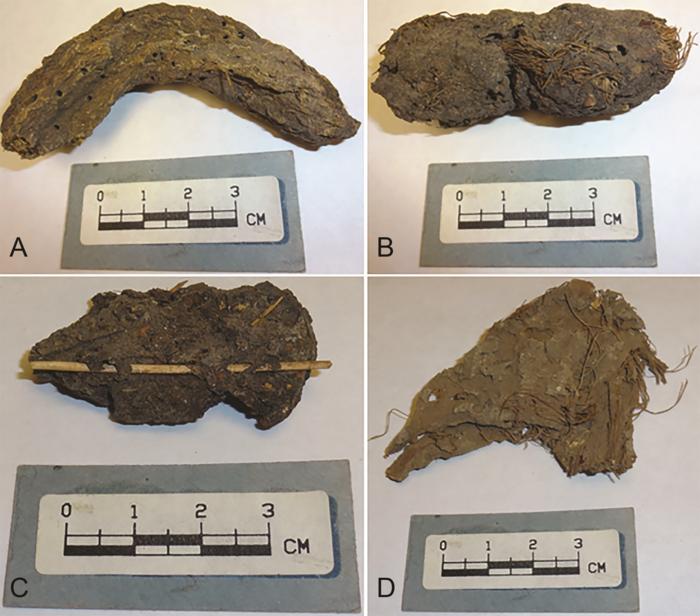In a groundbreaking study that pushes the boundaries of ancient microbiology, researchers from Indiana University have successfully decoded the DNA signatures of intestinal pathogens preserved in desiccated human feces dating back more than a millennium. Published in the renowned open-access journal PLOS One on October 22, 2025, this research offers a remarkable glimpse into the enteric infections that afflicted human populations living in the Rio Zape Valley of Mexico between 725 and 920 CE. The study, led by Drew Capone and colleagues, heralds a new era in paleopathology by applying state-of-the-art molecular techniques to analyze ancient stool samples, revealing a diverse and, in some cases, previously undetected community of gut parasites.
Ancient feces, or coprolites, serve as extraordinary bioarchives, encapsulating data about the health, diet, and environment of past human societies. Historically, the degradation of microbial DNA over thousands of years has posed formidable challenges that limited comprehensive analysis. However, leveraging highly sensitive and targeted DNA assays, Capone’s team meticulously examined ten coprolite samples excavated from the evocatively named Cave of the Dead Children (La Cueva de Los Muertos Chiquitos) in Mexico. These samples, radiocarbon dated to be between 1,100 and 1,300 years old, represent a rare window into the microbial ecology of ancient human guts.
This advanced molecular profiling uncovered genetic evidence of a spectrum of intestinal pathogens, some of which have never before been detected in ancient human feces. Notably, the protozoan Blastocystis and multiple strains of bacterial Escherichia coli emerged from the analysis as key components of the ancient gut microbiome. Additionally, the pervasive presence of pinworm DNA underscored the high burden of parasitic infections affecting the Loma San Gabriel people, who inhabited the Rio Zape Valley during this period. The detection of human-specific pathogens such as pinworm and Shigella also reinforces the utility of molecular diagnostics in distinguishing human fecal matter from other species’ waste in archaeological contexts.
This research is more than a mere cataloging of ancient pathogens; it provides crucial proof-of-concept for employing precise, modern DNA techniques to unravel the epidemiology of intestinal infections in bygone populations. Despite the limited sample size and targeted pathogen list, the high prevalence of these infections suggests that gastrointestinal diseases, likely exacerbated by inadequate sanitation and close community living conditions, were endemic features of life for these ancient peoples.
The methodological rigor of this study is underscored by its multi-faceted approach. Using targeted assays capable of amplifying minute fragments of pathogen DNA, the researchers navigated the complex interplay of microbial DNA preservation and environmental degradation. Their approach complements broader metagenomic sequencing strategies by enabling focused analysis on clinically relevant pathogens, thereby maximizing sensitivity and specificity. This methodological innovation represents a significant leap forward in paleomicrobiological research.
The implications of these findings reach beyond academic curiosity. Understanding the historical prevalence and diversity of enteric pathogens can inform models of human-pathogen co-evolution and shed light on how ancient diseases shaped human history. The revelation of diverse enteric infections among the Loma San Gabriel people suggests that infectious disease burden may have influenced social and demographic patterns, potentially contributing to health stresses weaving through these early societies.
Moreover, this study opens exciting avenues for future research by demonstrating that detailed microbial profiling is feasible from coprolites even in contexts where DNA preservation is challenging. The authors advocate for expanding sample sizes and incorporating a broader array of pathogens and commensal microbes to build more comprehensive pictures of ancient gut ecosystems. Such expanded studies could elucidate how diet, migration, and cultural practices influenced pathogen dynamics over centuries.
The integration of molecular methods with archaeological inquiry illustrated in this research embodies an interdisciplinary synergy essential for unraveling complex biohistorical questions. Joe Brown, a co-author on the study, remarked on the promising potential of combining targeted molecular assays with broader sequencing approaches to track pathogen presence and mobility across ancient populations. This fusion of techniques is poised to redefine our understanding of ancient disease landscapes.
Drew Capone reflected on the emotional and scientific impact of working with these ancient biological samples, likening the process to unlocking a biological time capsule. Each coprolite, beyond containing remnants of food and microbes, silently narrates tales of human health, disease burden, and everyday life a millennium ago. This work not only enriches the historical narrative but also illustrates how ancient biomolecules retain stories waiting to be told through scientific inquiry.
In conclusion, this pioneering analysis of ancient fecal DNA underscores the extraordinary capabilities of modern genomics to bridge past and present. By elucidating the common enteric infections in an ancient Mexican population, this study broadens our understanding of human health history and sets the stage for even more insightful explorations into the microbiomes of ancient civilizations. With ongoing technological advancements, we stand on the cusp of revolutionizing paleopathological research, transforming once-inaccessible data into rich tapestries of our ancestors’ lived experiences.
Readers and researchers interested in delving deeper into the full study can access the complete open-access article at PLOS One via http://plos.io/4mUfPFQ.
Subject of Research: People
Article Title: Targeted pathogen profiling of ancient feces reveals common enteric infections in the Rio Zape Valley, 725–920 CE
News Publication Date: 22-Oct-2025
Web References: http://plos.io/4mUfPFQ, https://doi.org/10.1371/journal.pone.0318140
References: Capone D, Holcomb D, Lai A, Meade T, Reinhard K, Brown J (2025) Targeted pathogen profiling of ancient feces reveals common enteric infections in the Rio Zape Valley, 725–920 CE. PLoS One 20(10): e0318140.
Image Credits: Johnica Winter, CC-BY 4.0 (https://creativecommons.org/licenses/by/4.0/)
Keywords: ancient DNA, coprolites, intestinal parasites, Blastocystis, Escherichia coli, pinworm, Shigella, paleopathology, microbiome, Rio Zape Valley, ancient infections, molecular diagnostics




